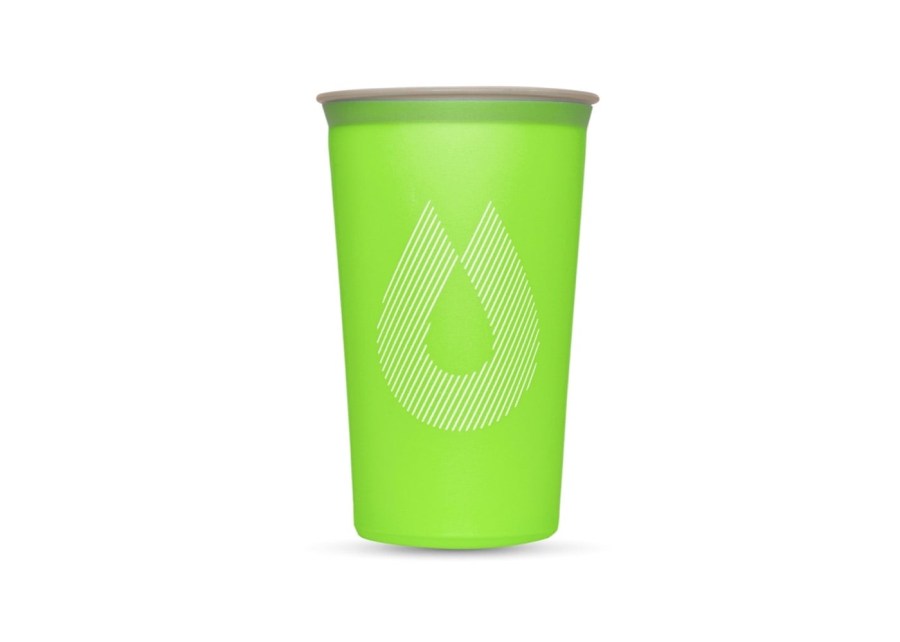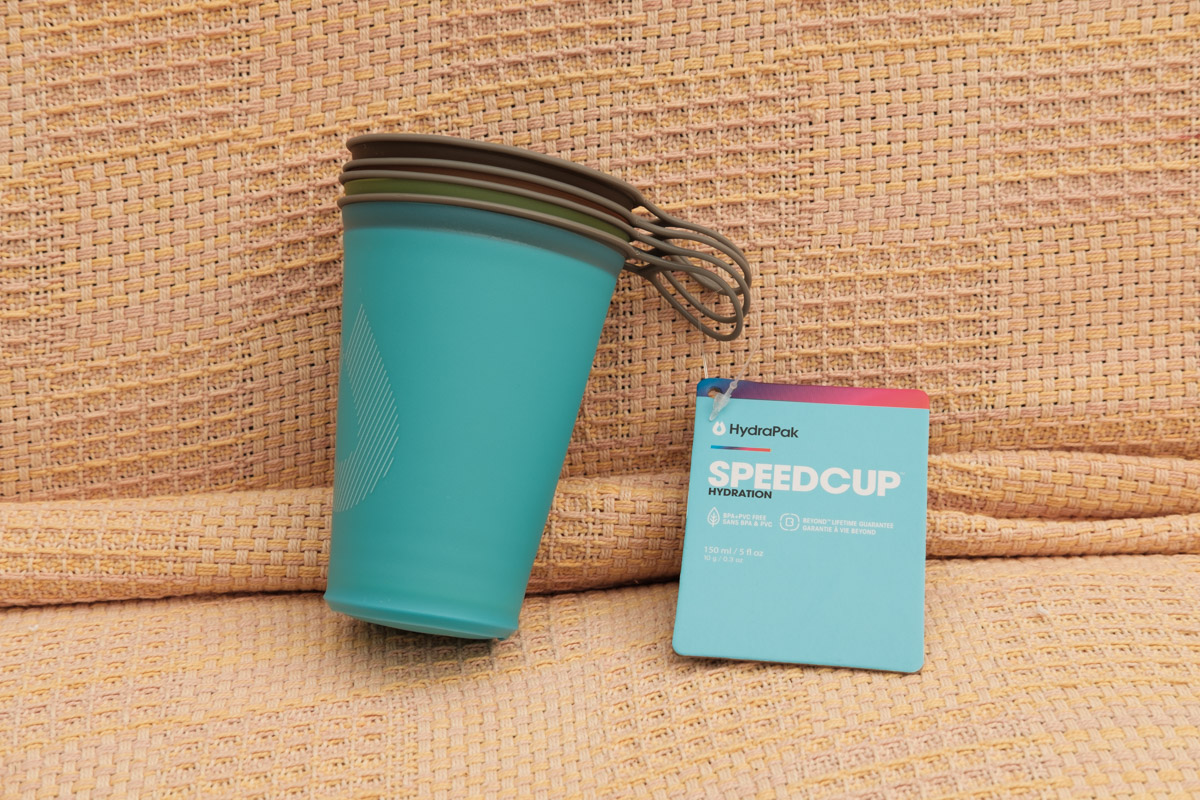The SpeedCup is an ultralight, squashable cup designed for runners – but does it have a place in the hillwalker’s rucksack? Alex Roddie investigates…
While drinking cups are more commonly used by hill runners than hillwalkers, they do have their aficionados. In Scandinavia, many walkers carry a traditional wooden drinking cup (known variously as a ‘guksi’, ‘kuksa’, or ‘kåsa’) and may not even carry a water bottle in some areas. In the Scottish Highlands, where water is similarly plentiful and usually of good quality, I have met hikers who prefer to drink directly from streams with a cup.
Enter the Hydrapak SpeedCup
This is a pretty simple product. It’s a 200ml cup made from TPU, which has some useful properties: in addition to being soft and very flexible, it’s also durable and abrasion resistant, can be frozen, washable in the top rack of the dishwasher, and is 100% BPA and PVC free. The seams are welded, which Hydrapak claim offers ‘superior durability and elasticity’. So far the seams have held up very well.
Each cup weighs only 10g, and they come in four-packs for £24.99 in the UK, or individually for £7.99. The cups are available in green, blue, grey or orange. They’re manufactured in China.
The cup doesn’t have a traditional handle but rather a finger loop designed for efficiently scooping water out of streams. It’s aimed at runners who need to rehydrate on the go, a task for which it excels – it’s easy to squash it in a pocket and deploy at a moment’s notice for a quick gulp of water. I’ve found its ability to spring back into shape after being squashed for hours quite surprising.
It can also be used as a more traditional cup, albeit with less aplomb. It’ll stand on a flat surface, although the shape is a little top-heavy when full and it isn’t particularly stable. I think the manufacturer’s claim of ‘free standing when empty or full’ is a little optimistic.
To answer the obvious question: no, it can’t really replace the backpacker’s plastic or titanium mug.
The main problem is the upper temperature limit, which is only 60˚C, so forget about using it for a brew on your wild camp. I tested it with boiling water at 100˚C. Although it did not leak, it did seem to lose a bit of its rigidity after this experiment – although the seams did not burst, as I suspected they might. So using a SpeedCup for tea or coffee is out (I wouldn’t trust it to stand upright when full of hot liquid anyway).
It’s worth mentioning that Hydrapak offer a ‘Beyond Lifetime Guarantee’ with this product:
“If you experience any issue with the product’s manufacturing or materials, we’ll repair or replace the item for free. No questions asked.”
Who and what is this product for?
Hill runners who are looking for the lightest possible cup for quick rehydrating will find this a good option. If you’re running in areas where water quality might be suspect, you’ll probably want to go for a filter and bottle or bladder, but at only 10g there’s no reason not to carry a SpeedCup too.
Hillwalkers who fancy trying drinking directly from streams will enjoy the no-fuss nature of the SpeedCup, although there are of course cheaper and more versatile options, such as a basic plastic mug that can also be used for a cup of tea.
The SpeedCup could have a place in the backpacker’s kit list although I think it’s better regarded as a backup or emergency option rather than your main cup. That said, it is pretty good for a dram of whisky in a bothy at the end of the day – the SpeedCup is stable enough when filled up to about the 50% mark, and you’ll rarely be putting a whisky cup down anyway…
Ultralight backpackers will likely find the SpeedCup more interesting, because many ultralighters don’t carry a mug at all – this gives you a bit more flexibility for a very small addition in weight.









